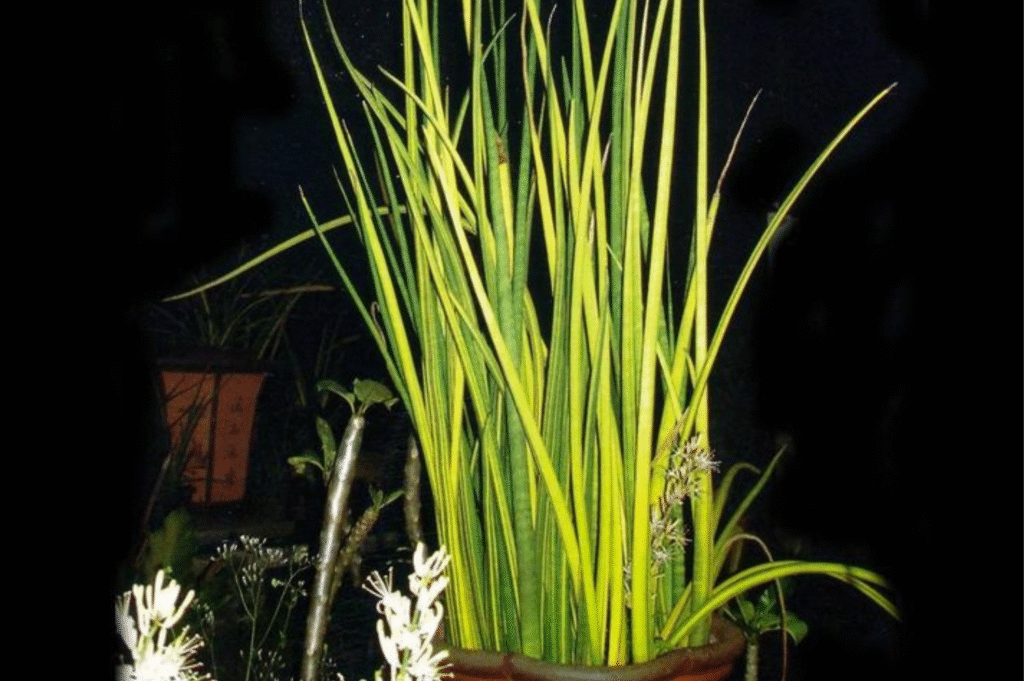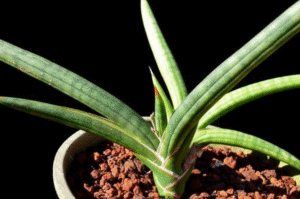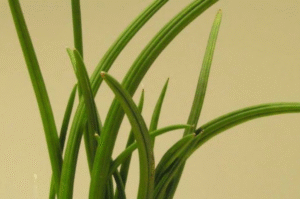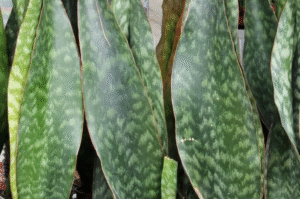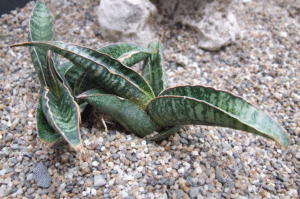Sansevieria sulcata is a rare and intriguing member of the snake plant family. Known for its deep grooves and upright, sword-like foliage, this variety brings a structured elegance to indoor plant collections. If you’re searching for a resilient, low-maintenance plant that thrives in a variety of conditions, Sansevieria sulcata should be on your shortlist.
This guide provides everything you need to successfully plant, grow, and maintain Sansevieria sulcata, whether you’re a first-time plant parent or a seasoned enthusiast.
Overview of Sansevieria sulcata
Sansevieria sulcata is a succulent perennial native to Africa. It features stiff, upright leaves with characteristic longitudinal grooves. The grooves (or sulcations) are what give this plant its name and visual distinction from more common snake plant varieties. Like other sansevierias, this variety is extremely drought-resistant and tolerant of indoor environments, making it a top choice for homes, offices, and even low-light commercial spaces.
Key characteristics include:
- Vertical, narrow, grooved leaves
- Compact, architectural growth habit
- High drought tolerance
- Minimal maintenance requirements
- Effective air purification properties
Its visual uniqueness, combined with its toughness, makes it especially appealing to those who want a striking yet dependable indoor plant.
Why Choose Sansevieria sulcata
Sansevieria sulcata is not just about looks. Here are several reasons why this variety is becoming a favorite among plant collectors:
Distinctive Texture: The furrowed texture along the leaves adds a layer of visual interest not found in many other indoor plants.
Low Maintenance: This plant thrives with minimal attention. Infrequent watering, low light tolerance, and resistance to most pests make it ideal for busy lifestyles.
Space-Efficient: With its upright, non-spreading growth habit, it fits well in tight or vertical spaces such as windowsills, shelves, and small corners.
Air Quality Improvement: Like other snake plants, it is known to filter indoor air by removing toxins such as benzene, xylene, and formaldehyde.
How to Plant Sansevieria sulcata
Pot Selection
Begin with a sturdy pot made from materials like ceramic, clay, or terracotta. The pot must have drainage holes to prevent excess water from accumulating, as the plant is highly susceptible to root rot in soggy soil.
Soil Type
Use a well-draining soil mix designed for succulents or cacti. A recommended custom mix would include:
- 2 parts standard potting soil
- 1 part coarse sand or pumice
- 1 part perlite
This blend ensures proper aeration while avoiding moisture retention that could damage the roots.
Planting Instructions
- Place a layer of pebbles or stones at the bottom of the pot for enhanced drainage.
- Add your succulent soil mix to about one-third of the pot.
- Position the Sansevieria sulcata in the center, keeping the root ball just below the rim.
- Fill the remaining space with soil, gently pressing to secure the plant.
- Water lightly after planting and allow the soil to fully dry before the next watering cycle.
Ideal Growing Conditions
Light Requirements
Sansevieria sulcata performs well in a range of lighting conditions. For best results, please place it in bright, indirect light. It will tolerate low light, although growth may slow. Avoid placing the plant in prolonged direct sunlight, as this can cause leaf scorching.
If kept in an office or low-light room, occasional exposure to brighter light will help maintain its vigor and leaf coloration.
Temperature Range
The optimal temperature range is between 60°F and 85°F (15°C to 29°C). Sansevieria sulcata does not tolerate frost or extreme cold. It should be moved indoors or kept away from cold windows during the winter months.
Avoid sudden temperature fluctuations, and never place the plant directly under heating or cooling vents.
Humidity
Average indoor humidity is sufficient. High humidity is not required, and the plant will thrive in drier air. This makes it ideal for homes with heating systems that lower ambient humidity.
Watering Guidelines
Watering frequency should be based on the plant’s environment and the season. As a rule, always allow the soil to dry completely between waterings.
- During spring and summer, water every 2 to 4 weeks.
- In fall and winter, reduce watering to once a month or less.
Never let the plant sit in water. Overwatering is the most common cause of issues like root rot, yellowing leaves, and fungal infections.
Fertilizing Sansevieria sulcata
Fertilize once a month during the growing season (spring through early fall) using a balanced liquid fertilizer diluted to half strength. Avoid fertilizing during the dormant winter months.
A general-purpose houseplant fertilizer with an equal N-P-K ratio such as 10-10-10 or 20-20-20 will work well. Overfertilization can lead to leaf damage or salt build-up in the soil, so use fertilizer sparingly.
Propagation Methods
Sansevieria sulcata can be propagated through two reliable methods: leaf cuttings and division.
Leaf Cuttings in Soil
- Select a mature, healthy leaf and cut it into 3 to 4-inch sections.
- Let the cuttings dry for 24–48 hours to form a callus.
- Plant the cuttings upright in a succulent mix, about an inch deep.
- Mist lightly until roots begin to form (usually within 3–6 weeks).
- Once rooted, switch to a regular watering routine.
Note: Leaf propagation may not retain the exact variegation or texture of the parent plant.
Division
For a more reliable outcome, divide the plant at the root when repotting.
- Remove the plant from its pot and gently shake off loose soil.
- Identify natural separations or offsets in the root ball.
- Using a clean, sharp knife, separate sections, ensuring each has roots attached.
- Replant each division in its own container.
Common Problems and Solutions
Yellowing Leaves
Usually caused by overwatering. Check for wet, compacted soil and reduce watering frequency.
Wrinkled or Curling Leaves
Typically a sign of underwatering or low humidity. Adjust your watering schedule accordingly.
Mushy or Soft Leaves at the Base
This often indicates root rot. Remove the affected sections and repot the plant in fresh, dry soil.
Pest Infestations
Although rare, mealybugs and spider mites can sometimes appear. Treat infestations by wiping the leaves with neem oil or spraying with insecticidal soap.
Seasonal Plant Care
Spring and Summer
- Resume regular watering and fertilizing
- Rotate the plant to ensure even growth
- Monitor for signs of new leaf development
Fall and Winter
- Cut back on watering
- Stop fertilizing
- Keep the plant in a warm, draft-free location
Repotting is best done in spring if the plant becomes root-bound or outgrows its container.
Is Sansevieria sulcata a Good Fit for Your Home?
Sansevieria sulcata is an excellent plant for anyone who values form and function. Its upright, textured leaves add visual structure without demanding constant attention. Whether you’re designing a minimalist interior or simply want a hardy companion on your windowsill, this plant delivers.
It is well-suited for:
- Busy professionals
- Small living spaces
- Low-light environments
- First-time plant owners
- Frequent travelers
Its ability to thrive on neglect while enhancing indoor air quality makes it an ideal long-term investment for your plant collection.
Final Thoughts
Sansevieria sulcata is a hidden gem among snake plants. With its sculptural lines, rugged texture, and hardy nature, it offers an exceptional blend of beauty and resilience. Whether you’re planting it for aesthetic value or its low-maintenance appeal, this variety won’t disappoint.
By following the simple guidelines in this article (selecting the right soil, watering sparingly, providing indirect light, and occasional feeding), you can enjoy a healthy, thriving Sansevieria sulcata for years.
For more plant care guides and expert tips, visit All Snake Plant and explore a world of rare and remarkable snake plant varieties.

